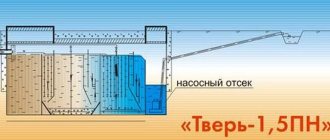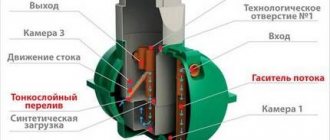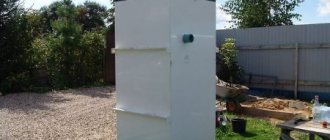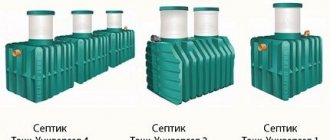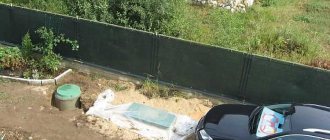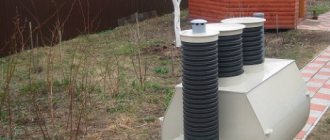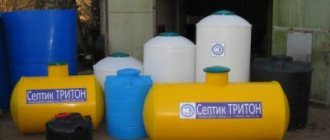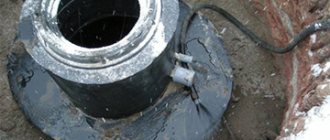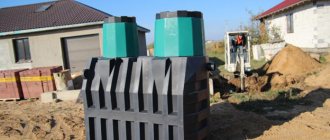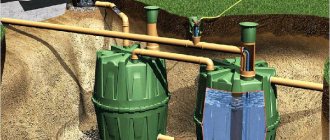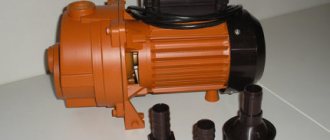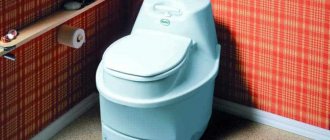In areas with private buildings, the absence of a central sewerage system is not uncommon. Waste disposal is becoming a problem for home owners, and they are increasingly choosing to install their own treatment system. One such solution could be a Tver septic tank, which performs a full cycle of wastewater treatment.
But you must admit, before you decide to purchase a treatment plant, you need to study the design of the unit, understand the principle of its operation, and become familiar with the operational advantages and disadvantages. All these points are described in detail in the article.
Design and principle of operation
For more than twenty years, the Engineering Equipment trading house has been producing treatment plants and autonomous sewers. The same manufacturer produces energy-dependent septic tanks Tver, which can have several options for draining liquids. Thanks to this, the principle of operation of the septic tank can be carried out as follows:
- Using a pump compartment or pump. With the help of such devices, liquid is discharged from the septic tank over distances limited by engineering communications.
- Gravity discharge of liquid into a reservoir or pit. This is the simplest principle of operation of the system, in which the water level in a reservoir or pit should always be below the discharge point from the septic tank. Such a system can be installed without the involvement of specialists.
- Using a special drainage well. On sandy soils, a drainage well can be dug to drain water and thus ensure the outflow of liquid without raising the water level to the discharge point.
Tver station structure
The design consists of several chambers, each of which performs its own specific job:
- Septic chamber - wastewater flows into it from the house through sewer pipes. Here, settling and division of elements into light and hard occurs.
- The anaerobic bioreactor is equipped with brushes and special yeast, thanks to which the process of fermentation and breakdown of wastewater occurs.
- An aeration tank is a chamber with an aerator where liquids are filled with oxygen and transferred to the next compartment for processing.
- Settlement tank for heavy suspensions and elements. In it they sink to the bottom of the chamber.
- An anaerobic bioreactor is a compartment where anaerobic microbes multiply. Thanks to their work, organic inclusions and activated sludge located at the bottom of the chamber are dissolved and absorbed. After this, the resulting mass is associated with phosphorus and liquid compounds.
- A settling tank is a chamber where the remaining heavy mixtures settle and the liquid is clarified.
Liquids flowing out of the system, 98% purified, are disinfected using special floats with chlorine, and almost pure water flows into the pit.
Model range of cleaning equipment
The manufacturer produces eight septic tank models of different sizes. They can process from 0.75 to 10 cubic meters of wastewater per day. For example, the most productive modification Tver 10 is designed for processing wastewater coming from a small cafe or hotel. Tver has the lowest productivity 0.75. This septic tank is designed to serve residential buildings inhabited by no more than 3 people.
In addition to performance, the equipment also differs in design features. About four to five modifications of each model are produced, differing in housing dimensions, number of compressors, etc. The location of the inlet pipe also varies, which can be located at a depth of 0.6 m or 0.3 m. Depending on this, the dimensions and shape of the inspection well change.
The model range of Tver brand septic tanks is focused on the difference in the volume of processed wastewater. The installation process for modifications is generally similar, but depending on the modification of the device, some nuances arise
The design features of septic tanks are indicated by letters that are present in the names of the models. For example, modifications with the letter P are made of polypropylene. The inlet pipe in these models is located 0.34 m above ground level.
Variations with a compartment for a drainage pump are marked PN. Septic tanks with a compartment for a fecal pump are designated NP, and the NPN marking indicates the presence of two pump compartments at once.
Advantages and disadvantages of a septic tank Tver
The main advantages of the purification plant include:
- During operation of the station, complete purification of liquids occurs, which can be immediately dumped into a pit or even a reservoir. There is no need to install additional filtering devices.
- The service life of the septic tank is increased by a compressor installed in the room to force oxygen into the system.
- There are no small filter elements in the internal design of the device, which virtually eliminates the occurrence of blockages, even if the liquids are heavily contaminated.
- The body of the Tver septic tank is made of high quality polymers, which eliminates the occurrence of corrosion and guarantees long-term operation of the device.
- Since there are no small filter elements, the device can be cleaned and maintained independently. This significantly saves the family budget.
- Significantly saves energy by not having to constantly connect the device to electricity.
- No need to buy additional antibacterial agents.
- When using a large-volume device, it is possible to clean not only sewage, but also household waste.
Disadvantages of a septic tank Tver:
- According to reviews from many consumers, the main disadvantage of a purification plant during its operation is the need to connect to electricity. The device does not need to be permanently connected to the network; however, the garden plot must be electrified.
- In most cases, it is impossible to install a turnkey septic tank yourself. But this disadvantage is compensated by the possibility of independent maintenance and long-term operation of the system.
- When installing the device, an additional procedure is required in the form of anchoring the septic tank.
Degree of purification. Safety.
The Tver septic tank complies with all standards of SNiP, SanPiN, GOST. The technical performance of the equipment is so high that a number of models are used even in industrial enterprises. We, as manufacturers of septic tanks, guarantee filtration of up to 98% of contaminants.
The Tver septic tank uses a four-stage biological purification system, creates conditions for the proliferation of aerobic and anaerobic bacteria, and forces a compressor to supply air, which helps maintain the viability of microorganisms.
The domestic wastewater treatment plant is manufactured taking into account hygienic and sanitary standards, and therefore does not harm the environment. Treated wastewater from Tver may be discharged into open water bodies or onto terrain.
Advantages and disadvantages of using a septic tank Tver
Below are the advantages:
- The operation of this installation is capable of providing almost complete wastewater treatment. They are purified up to 98%, which means there is no need to install additional soil filtration; the entire process takes place inside the station.
- The high-strength polymer composition from which the Tver septic tank is made does not corrode and is durable in use. According to the manufacturers, this purification plant can last for several decades without repairs or additional maintenance.
- The purity of the water at the outlet and the septic tank allows its release into the ground, reservoirs, and use in watering the garden and lawn. The main thing is the correct selection of the cleaning system in terms of performance so that it successfully copes with the volume of wastewater.
- The water goes through several containers and purification methods to truly rid it of all harmful substances. This can be guaranteed by sedimentation, anaerobic, aerobic processes of biodegradation of impurities.
- The design features of the treatment plant allow for large discharges of water. If you abruptly drain a whole bath, this will not affect the quality of water purification in any way; they will also have high output values.
- Installation of this device is very simple and can be carried out regardless of the condition of the soil. But if there is a risk of groundwater rising, the septic tank must be secured and weighted using special “anchors”, they are usually included in the kit.
- The compressors are durable, the entire installation is extremely easy to maintain. With proper operation, it is necessary to pump out insoluble sediment only once a year or a little less often.
- The design does not have any removable filters, so there is no need to clean them regularly. The sediment is retained by a special partition inside the structure.
- There is no need to purchase additional waste decomposition products. The system is equipped with bacteria that can self-regenerate and last for the entire life of the device.
- It is possible to use a septic tank even with non-permanent residence; an intermittent operating cycle will not affect its quality, since the installation is equipped with a combined cleaning method, which creates a low load on the activated sludge.
- The operation of a septic tank involves the removal of phosphorus-containing compounds, which are very toxic.
- There is a very small chance of blockage, since water practically does not pass through the hoses and pipes.
- The main compressor is located indoors, and not in the cleaning structure itself. This allows you to avoid breakdowns as a result of an emergency and, in general, significantly extends its service life.
- The design has large, convenient plastic sewer hatches, which makes cleaning easy.
Identified shortcomings of the Tver cleaning system:
- Energy dependence is the main disadvantage of all such cleaning systems. The compressor must supply air to the aeration tanks so that all cleaning processes take place as efficiently as possible, but unlike other systems, “Tver” can operate for a day after a power outage. After this time, the quality of water purification will deteriorate, so using a septic tank is not recommended.
- The price is high, but it is worth considering that the design does not provide for the construction of filtration fields or drainage wells in order to save money on additional work.
The septic tank is light in weight and has fairly thin walls; this cannot be considered a plus or minus. These factors make installation easy, and the thin walls are made of high-quality polypropylene. Under the influence of heavy loads, they may bend, but will not collapse.
Completely pumping out the tank is a fatal mistake
A common mistake made by septic tank owners during conservation is pumping out the tanks. If there is no liquid left, the bacteria quickly die from lack of food. In this case, in the spring you may encounter big problems during the operation of the sewer system if measures are not taken in a timely manner to increase the number of microorganisms.
The treatment plant will cease to perform its functions: the water will go into the ground simply clarified, and not purified. This threatens the contamination of fertile soils, the spread of pathogenic bacteria, and even cases of disease among people and domestic animals.
If an underground aquifer on a site comes close to the surface, infiltration is possible: fecal bacteria will quickly end up in drinking wells and begin to spread further. Under unfavorable circumstances, this is fraught with real epidemics and livestock pestilence.
The logic of septic tank owners who drain water for the winter is clear: they fear that the liquid will freeze and rupture the tank body, but if the structure is installed correctly, this probability is extremely low.
The damage that can be caused by completely pumping out the chambers of a septic tank can be much greater, so you should not make this mistake.
If you remove water from the chambers of a plastic or fiberglass septic tank, you may get an unpleasant surprise in the spring: the structure will float to the surface, breaking pipelines and raising soil. Correct installation reduces the risk of floating, but not as critically as the owners expect.
Step-by-step installation instructions are provided below.
Soils are not static; their movements are always possible, especially during periods of sudden temperature changes, changes in groundwater level or under the influence of other factors. Loads on the side walls and bottom of the tank can increase significantly.
Under soil pressure, an empty septic tank can either float or become deformed. In both cases, you will have to spend effort, time and money to restore the sewer system. If the building cannot be repaired, you have to buy a new treatment facility.
All these problems, unnecessary expenses and worries are easy to avoid. You just need to properly preserve the septic tank and take into account that in winter you may need to put it back into operation.
If the owner plans to visit a country house or dacha at least once a month, the treatment plant can be left “as is” - fully functional. Even an energy-dependent septic tank with running compressors will not burden the budget too much.
Best answers
Ѽ✿ლBiology Anatomievna✿ლ:
The older we get, the less we like the hustle and bustle of the big city. Today, when the technical level and construction technologies make it possible to live outside the city, many move permanently to a private house and at the same time receive well-deserved comfort, silence and fresh air. But at the same time, former residents of city apartments face new problems that need to be solved before the long-awaited move into a country house. And one of the pressing issues is related to the arrangement of sewerage, because it is not often possible to connect to a centralized sewerage system
Owners who rely on modern solutions often pay attention to Tver septic tanks, reviews of which on the Internet are mostly positive. Is the choice justified and is it worth relying on septic tanks Tver - you will learn about this and much more from our short article! Septic tanks Tver: what, how, why
Septic tank Tver is a deep wastewater treatment plant with a high efficiency rate. When we talk about efficiency, we mean 98% purification of wastewater from organic impurities and ammonia nitrogen. The water leaving the septic tank complies with the current SNiP, so the owners of Tver stations do not have any problems with environmental organizations. What cannot always be said about Topas-type installations, for example, even despite positive reviews about Topol septic tanks (analogous to Topas), under certain conditions (large simultaneous discharges of wastewater) their complete cleaning is not guaranteed.
Reviews about septic tanks in Tver are good: the products are made of high-quality materials that are not subject to corrosion, and therefore can serve for decades without causing any complaints about the quality of wastewater treatment. Like all deep treatment stations, Tver does not need to develop aeration fields, where the processes of soil filtration and biological purification should take place - all technological stages are carried out in the process of four-stage cleaning inside the septic tank (delimited into several chambers, the tank has several settling tanks, aerators, bioreactors ) . Therefore, purified water can easily be discharged into open reservoirs without causing harm to their inhabitants. What cannot be said about septic tanks - you can read reviews about Triton septic tanks.
The range of septic tanks in Tver also raises no complaints. Anyone can purchase a unit of the required performance, designed for both a family of three and several families. The process of treating wastewater from ammonia nitrogen deserves special attention - many manufacturers of automatic stations for deep wastewater treatment forget about this stage, but in the Tver septic tank it is implemented and shows good results. It's all about the lime bedding, the active compounds of which react with ammonium compounds, significantly reducing their concentration in purified water. Septic tank installation Tver
Considering the compact size of the septic tank, its installation consists only of excavation work (digging a pit of the required size, taking into account 300 mm of side and 200 mm of bottom sand filling). Next, the septic tank is connected to the supply and discharge pipelines, as well as to the electrical network (aerator compressors operate on electricity)
If you pay attention to the negative reviews about septic tanks in Tver, then in most cases they are caused by incorrect installation of the station, lack of taking into account the quality indicators of the soil on the site (for example, heaving soil and a large depth of its freezing). Price for a septic tank Tver
Prices for septic tanks Tver: 65,000 rubles. for installation for 1-3 people, 82,000 rub. for installation for 3-5 people - quite impressive, so the products are not available to every buyer. But, in general, Tver costs about the same as other deep cleaning stations. This septic tank needs to be cleaned at least once a year.
Konstantin Pukhov:
I’m in Kurgan, but I was digging a septic tank this year, what questions specifically?
Topas, Asters are all good, but why overpay if there are other proven septic tanks. I bought Biodeka and have been using it for a year now, saved money and got the same result.
Fishing rod test based on bait weight
For each class of rod, there is a limited range of lure weights recommended by the manufacturer for use with it, which is considered to be a rod test based on the weight of the lure. The manufacturer's recommendations are based on accurate calculations and verification testing of tackle with baits of a certain weight, with which the rod shows the best performance and fully realizes its potential.
The tested lure weight range is indicated on the rod by two numbers separated by a hyphen, corresponding to the minimum and maximum weight of the recommended lures. It is with these baits, in this weight range, that the blank - the working part of the rod excluding the handle - retains the best characteristics.
On Asian-made spinning rods, which make up the bulk of mid-budget fishing rods, the following weight test designations are often found: “CW15-40g” or “15-40g” the letters “CW” are the first letters of the phrase “Casting Weight” literally meaning “casting weight 15-40g.” » or “lure 4-18g” - “bait 4-18g”.
Some English-speaking manufacturers of spinning rods indicate the bait weight test in fractions of an ounce of avoirdupois, for example: “1/4-3/8 oz.” The weight of an ounce of avoirdupois is 28.35 g. It is easy to convert to grams by multiplying the values in fractions of an ounce by 28.35 g. and receiving a rounded test for the weight of the bait in grams “7.1-10.7g.” For those who have forgotten the rules for multiplying fractions, I remind you: for the test value 28.35g. multiply by 1 and divide by 4 we get - 7.0875g. — round up to 7.1g, to calculate the second test value we do the same.
If the weight of the bait used exceeds the value recommended by the manufacturer, there is a high probability of the rod breaking during a power cast. When using baits weighing less than the minimum test value, their flight range is significantly limited, for the reason that the throwing potential of the rod, designed for a larger weight of the bait, remains unrealized.
Correspondence of the test for the weight of the bait with the class of the spinning rod:
- Ultra - light - Ultra Light - UL - 1-7g.
- Light - Light - L - 3-14g.
- Medium - light - Medium Light - ML - 5-20g.
- Medium - Medium - M - 10-30g.
- Medium - heavy - Medium Heavy - MH - 15-40g.
- Heavy - Heavy - H - 20-50g.
- Extra - heavy - Extra Heavy - EH - from 60 and above.
If you decide to cast a bait weighing 2g with a “medium” class rod, it doesn’t matter, you simply won’t get it to the right place or the casting will not be accurate, but if you throw a weight of 30g with an “ultra-light” one, you can break the rod whip or at best, you won’t get an effective cast with an overloaded spinning rod. It is necessary to strictly observe the correspondence of the weight of the bait used with the test for its weight indicated on the fishing rod, especially regarding its maximum permissible values (upper limit).
The rod class designation is not found on all spinning rods, and the “weight test” is a mandatory marking on the form, by which you can always determine the rod class using the above correspondence. For example: the form indicates the test “20-50g”, which means this is a rod of the “heavy” class “Heavy”, abbreviated as “HM”. You can safely throw baits from 20 to 50 grams; for baits this is a significant weight and size, and therefore you are supposed to catch large fish with them (catfish, taimen, deep-sea pike, etc.).
Fishing for small fish with a powerful heavy-class spinning rod is a futile task. A powerful spinning rod is insensitive and the bite of small fish, in most cases, goes unnoticed. For small and medium fish (perch, trout, small chub, etc.) rods of the “light” and “ultra-light” class are suitable.
Highly sensitive spinning rods of the “Ultra Light” class with a test of 1-7g, designed for the use of miniature baits, which are almost impossible to cast with a rod of another class, while obtaining the maximum flight range. Rods of the “ultra-light” class are very thin and fragile and require careful and delicate handling. You can become the owner of this class of rod only after gaining some experience in handling “light” tackle.
To master spinning fishing and all its subtleties, such as; long-range and accurate casting of the bait, pendulum casting, the ability to throw the bait from any side of the body, competently and correctly selected wiring technique, beautiful and “gentle” hooking and much more, a “medium-light” class spinning rod with a “5-20g” test is suitable.
Such a rod can “forgive” a novice spinning angler some mistakes, without upsetting him with its breakdown.
There are situations when large fish bite on small and light baits, which are not easy to catch even for an experienced fisherman. This begs the question: “What to do in such a case? Shouldn’t you break the line?” A correctly selected fishing line, taking into account its breaking load and the power of the spinning rod, will break on its own. If the fishing line size is not chosen correctly, there may be several options.
The worst of them is if the friction brake of the reel is too tight, in this case, at the moment of hooking, the rod can break (most of the predators, when hooked, strongly resist, while making impressive jerks)
Due to the insufficient power of the spinning rod, you will have to loosen the clutch during fishing, thereby reducing the load on the rod; any inaccuracy in adjusting the friction brake (the direction of adjusting the brake was mixed up or it was not loosened enough) will cause the rod to break. An excessively weakened friction brake complicates the fishing of a predator, allowing it to tangle the fishing line, leading it into shelters (snag, reeds, etc.), and does not prevent the fish being caught from performing various maneuvers and pirouettes, with the help of which it very often gets off the hook.
Best answers
Nasima:
We also have Topas, we really like it, a specialist comes 4 times a year to wash everything. Fertile silt can be fertilized and water can be irrigated with purified water, but we do not use this service. Advice - when installing, take installation supervision, i.e., under the guidance of a specialist, the Tajiks will dig a hole and put a container there, and the specialist will connect everything. We've had it for 6 years now, no complaints, only once the ground sank and the leaking pipe was pushed through, but everything was quickly fixed.
Abortionist Babushkin:
I just have three rings buried in the ground
Grandfather Micah:
I have four rings... we live all year round. It is unknown when it will be filled. . the neighbors have not accumulated any in 5 years. It depends on what kind of soil you have.
Vladimir Petrov:
I have a broken pit two by two and two. We have been using it for ten years and have never cleaned it with only bio products. And we will use many more
Larisa Brezhneva:
We have topas, of course it’s convenient) once a year we call the car to pump it out and then wash it. Previously, there were also rings, but we have clay and they pumped them out once every 2 weeks, since we lived in the 5th room) the only thing we always have in the hottest weather is a smell in the house, why no one can figure it out and they called representatives and looked at it themselves with the neighbors , and the electrician checked everything) the rest of the time there are no problems, almost all of us have these)
Sanya Tochkin:
We have a Topas septic tank at our dacha and everything works ok))
Mikhail Tinishov:
Unilos has been working at my parents’ site for 10 years now. Very pleased. They also service it themselves (about 2 times a year). Although there is a high groundwater level on the site, there are no problems at all. In winter it works like clockwork.
Maxim Sidorenkov:
It’s not even right to compare Topas and Tank; these are 2 completely different systems based on their operating principles. To give an analogy, Topas is MERSEDES and Tank Tavria). I myself struggled with the choice for a long time, but in the end I bought Topas, and I don’t regret it at all. It has been working for 2 years already. septik /
A septic tank at a dacha in winter can freeze for two reasons:
In winter, the septic tank will freeze if during frosts the treatment system is used extremely irregularly or not used at all.
Provided that the sewerage system is used as usual, the wastewater is warm and you can be sure that the water in the pipes will not freeze. In the tank itself, with the regular flow of wastewater, vigorous bacterial activity occurs, accompanied by the release of heat, therefore, during normal operation and moderate frosts, the temperature inside the septic tank is above zero and its contents cannot freeze.
Bubbling in aeration stations prevents the formation of ice crusts, and if the compressor is located in the house, it acts as a heater, supplying the container with 40 liters of warm air per minute.
Rice.
2 Water with aeration does not freeze Before the onset of cold weather, remove excess sludge from the bottom of the septic tank, since solid insoluble sediment reduces the useful volume of the container and there is little space left for the normal processing process.
Septic tank Tver price with turnkey installation
On its official website, the manufacturer offers favorable prices for equipment, which depend on the design configuration and its modifications. The turnkey price may include commissioning, project development, installation and many other works and services.
The price of the installation itself depends on the volume of its productivity. Accordingly, the greater the productivity, the higher the cost of the cleaning system.
The manufacturer offers:
- Septic tank Tver-0.35 P with a capacity of 0.35 cubic meters per day and gravity drainage for 64,900 rubles.
- A septic tank Tver-0.35 PN with the same productivity, but forced drainage costs 71,100 rubles.
- The Tver-0.75 P septic tank has a gravity outlet and a capacity of 0.75 cubic meters per day. The price of the device is 82,900 rubles.
- A septic tank Tver-1PN with forced drainage and a capacity of one cubic meter per day costs 112,300 rubles.
- Septic tank Tver-25 is the most powerful system with a capacity of 25 cubic meters per day. Its price is about one million rubles.
On the manufacturer’s website, you can choose a cleaning system suitable for your home with the required performance and convenient drainage. Installation and operation of such septic tanks can be carried out in any soil.
Model selection principle
This type of treatment facility is selected based on its daily flow rate and the magnitude of the salvo discharge. You calculate your daily consumption based on the number of residents and all the procedures they undergo every day.
For example. Family of 3, there is a washing machine, dishwasher, shower/bathtub, toilet, kitchen sink. We count how many times a cistern can be flushed on average per day, multiply by its capacity, and find how much water is flushed when the toilet is installed. Next, we calculate how much water is spent on laundry, washing dishes, washing, how often family members take a shower, bath, etc. We sum up all the data and get the number of drains per day.
You need to choose the size for the salvo discharge or the daily amount of waste
Now we calculate the magnitude of the salvo discharge. This is the volume that an individual sewerage installation can process within 2 hours. Most often, at a minimum, this is the volume of two bathrooms or the amount of water that a family spends during an evening/morning shower + toilet flushes + water for washing + cooking + washing dishes. This is if all these processes occur simultaneously.
Knowing these two numbers, you select a model. In the selected model, both numbers should not be less. More - easily, less - the installation is unlikely to cope. As a rule, the main criterion is salvo discharge. Since if the installation cannot cope with such an amount of water, untreated water will leave the septic tank. As professionals say, there will be a removal of silt, and accordingly, a smell and accompanying “charms” will appear.
Types of sewage systems for summer cottages are described here.
Installation and maintenance of a septic tank Tver
To install the cleaning system, you can invite specialists or do it yourself.
It is very important to choose the right location for the equipment and dig a pit corresponding to its size. In this case, the dimensions of the trench should be made thirty centimeters larger than the dimensions of the installation
The bottom of the dug pit is filled with cement-sand mortar, the septic tank is installed and secured. After this, sewer pipes and electricity are connected.
When everything is installed and connected, the septic tank will need to be additionally filled with a mixture of cement and sand, while simultaneously filling it with water. This will protect the station from possible damage.
When installing a septic tank, you must strictly follow all instructions and take into account the characteristics of the site. Therefore, it is better to entrust the installation of such equipment to professionals who will provide a guarantee for their work.
Maintenance Tips
A septic tank, like any other device, needs regular maintenance. For its good continuous operation it is required:
- periodically check the operation of compressors that are responsible for the quality of wastewater;
- remove accumulated sediment annually.
When operating the station it is prohibited:
- throw baby diapers, rubber and plastic products, plastic bags, various construction waste and other items that do not decompose under the influence of bacteria into the sewer;
- pour paints, solvents, gasoline and other caustic and toxic liquids into the system.
If all these requirements are met, the Tver septic tank will provide the sewer system with the highest possible level of wastewater treatment and will operate effectively for many years.
How to carry out installation correctly
The first step is to dig a pit of the required size. Afterwards, sewer pipes and electricity are connected.
Most system breakdowns and malfunctions occur due to improper installation work.
If the soil is bulging, then the septic tank should be secured to avoid further floating of the entire device.
When backfilling a pit, it is best to use a mixture of dry and dry cement to prevent any damage to the casing.
